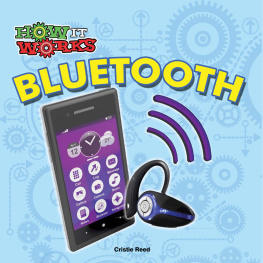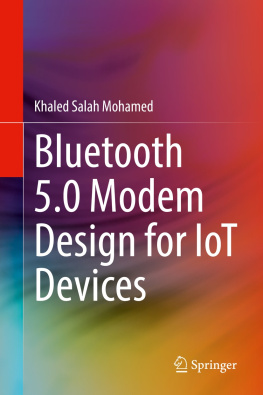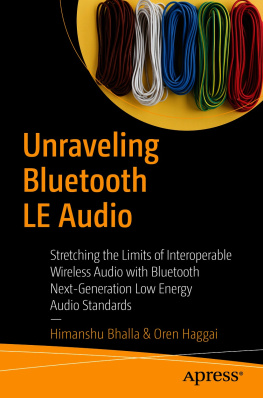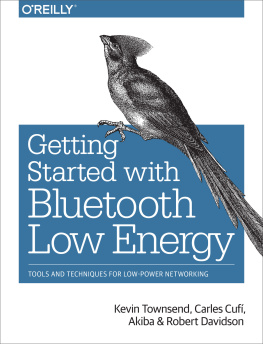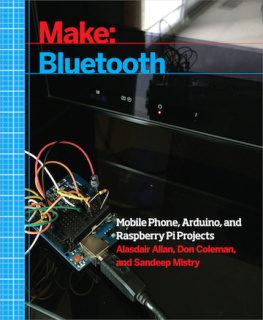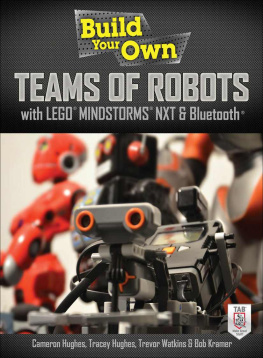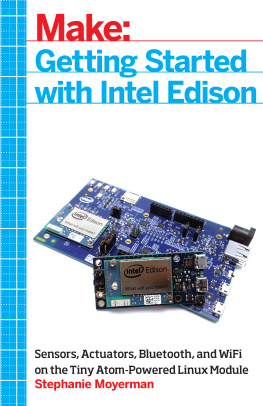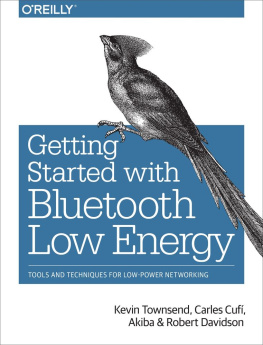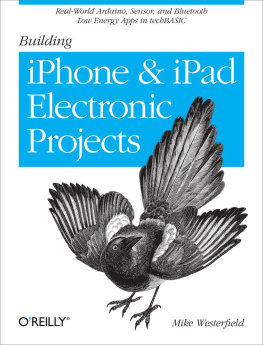Robin Heydon - Bluetooth Low Energy: The Developers Handbook
Here you can read online Robin Heydon - Bluetooth Low Energy: The Developers Handbook full text of the book (entire story) in english for free. Download pdf and epub, get meaning, cover and reviews about this ebook. year: 2012, publisher: Prentice Hall, genre: Computer / Science. Description of the work, (preface) as well as reviews are available. Best literature library LitArk.com created for fans of good reading and offers a wide selection of genres:
Romance novel
Science fiction
Adventure
Detective
Science
History
Home and family
Prose
Art
Politics
Computer
Non-fiction
Religion
Business
Children
Humor
Choose a favorite category and find really read worthwhile books. Enjoy immersion in the world of imagination, feel the emotions of the characters or learn something new for yourself, make an fascinating discovery.

- Book:Bluetooth Low Energy: The Developers Handbook
- Author:
- Publisher:Prentice Hall
- Genre:
- Year:2012
- Rating:3 / 5
- Favourites:Add to favourites
- Your mark:
Bluetooth Low Energy: The Developers Handbook: summary, description and annotation
We offer to read an annotation, description, summary or preface (depends on what the author of the book "Bluetooth Low Energy: The Developers Handbook" wrote himself). If you haven't found the necessary information about the book — write in the comments, we will try to find it.
A radical departure from conventional Bluetooth technology, Bluetooth low energy (BLE) enables breakthrough wireless applications in industries ranging from healthcare to transportation. Running on a coin-sized battery, BLE can operate reliably for years, connecting and extending everything from personal area network devices to next-generation sensors. Now, one of the standards leading developers has written the first comprehensive, accessible introduction to BLE for every system developer, designer, and engineer.
Robin Heydon, a member of the Bluetooth SIG Hall of Fame, has brought together essential information previously scattered through multiple standards documents, sharing the context and expert insights needed to implement high-performance working systems. He first reviews BLEs design goals, explaining how they drove key architectural decisions, and introduces BLEs innovative usage models. Next, he thoroughly covers how the two main parts of BLE, the controller and host, work together, and then addresses key issues from security and profiles through testing and qualification. This knowledge has enabled the creation of Bluetooth Smart and Bluetooth Smart Ready devices.
This guide is an indispensable companion to the official BLE standards documents and is for every technical professional and decision-maker considering BLE, planning BLE products, or transforming plans into working systems.
Topics Include
- BLE device types, design goals, terminology, and core concepts
- Architecture: controller, host, applications, and stack splits
- Usage models: presence detection, data broadcasting, connectionless models, and gateways
- Physical Layer: modulation, frequency band, radio channels, power, tolerance, and range
- Direct Test Mode: transceiver testing, hardware interfaces, and HCI
- Link Layer: state machine, packets, channels, broadcasting, encryption, and optimization
- HCI: physical/logical interfaces, controller setup, and connection management
- L2CAP: channels and packet structure, and LE signaling channels
- Attributes: grouping, services, characteristics, and protocols
- Security: pairing, bonding, and data signing
- Generic Access Profiles: roles, modes, procedures, security modes, data advertising, and services
- Applications, devices, services, profiles, and peripherals
- Testing/qualification: starting projects, selecting features, planning, testing, compliance, and more
Robin Heydon: author's other books
Who wrote Bluetooth Low Energy: The Developers Handbook? Find out the surname, the name of the author of the book and a list of all author's works by series.

